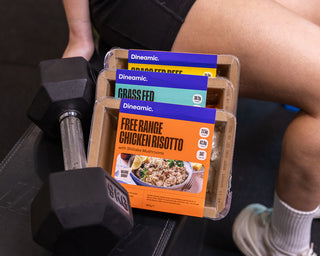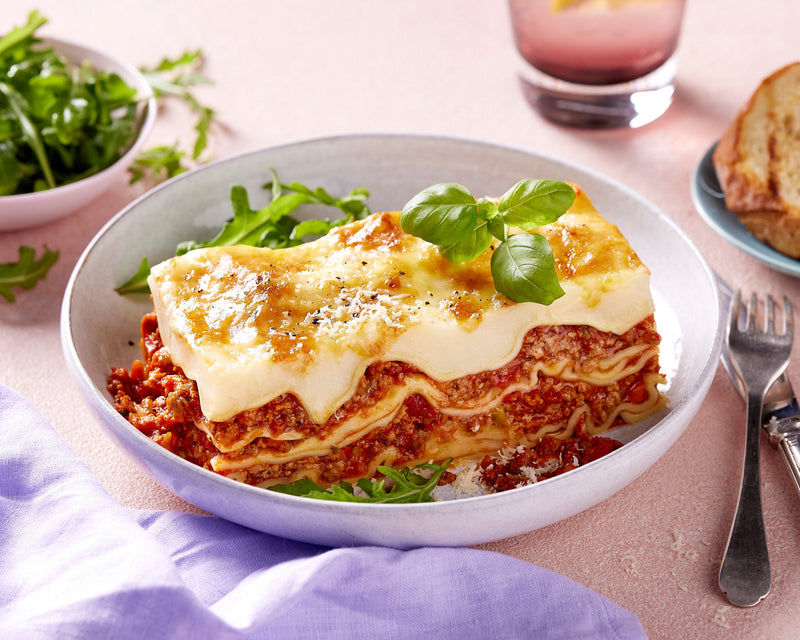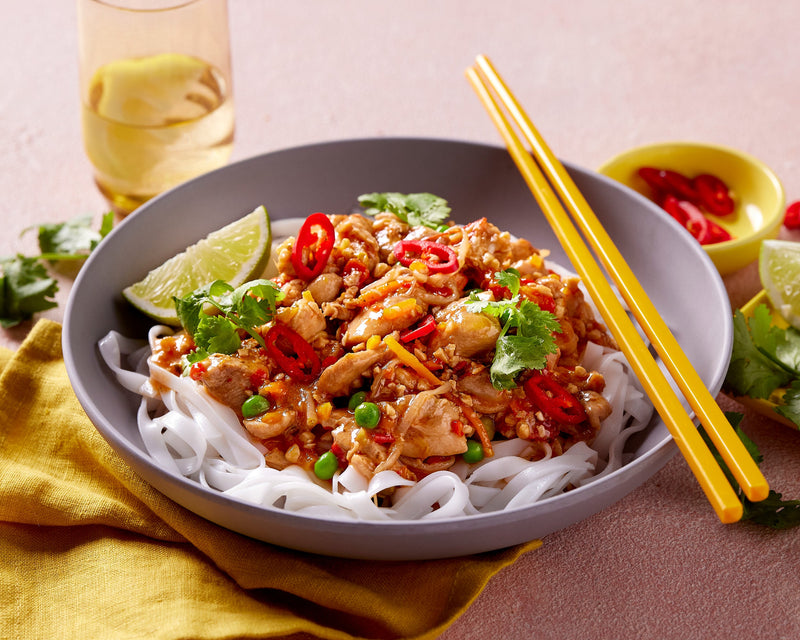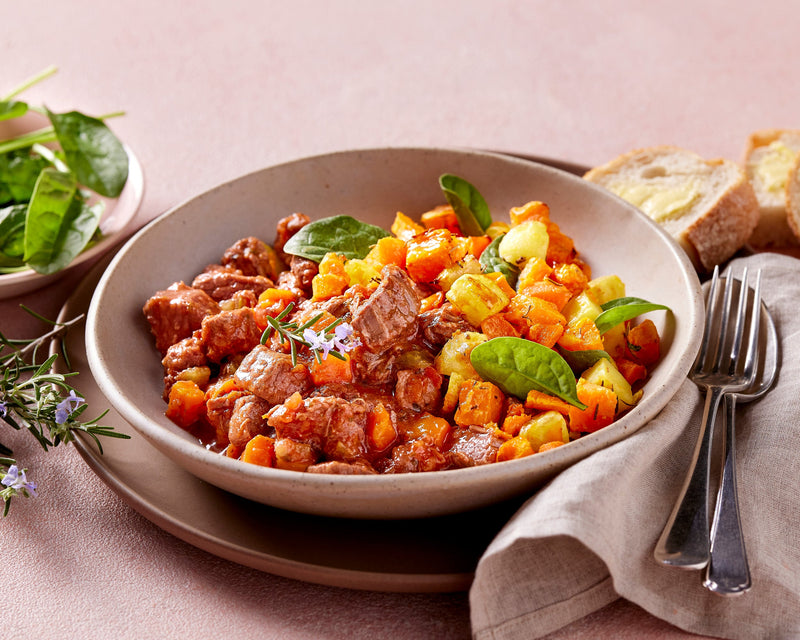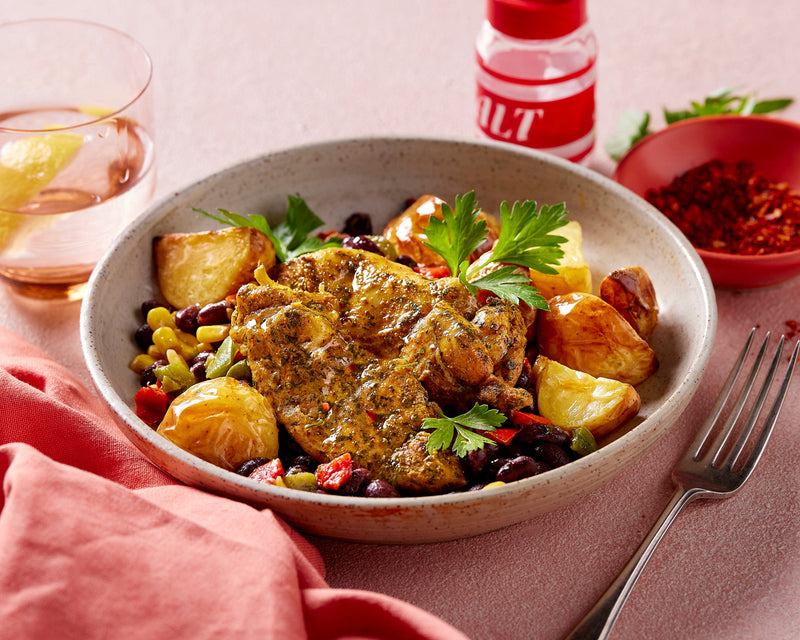
This week, we’ve added some new nutrition terms to our ever-growing nutrition dictionary along with links to more resources that help you understand the constant stream of food and nutrition terms constantly being thrown your way.
Between reading blogs online, the latest magazines, Facebook, Instagram, and even the packaging on shelves at the supermarket, there seems to be an endless stream of food and nutrition terms, and the tricky part is, you can’t understand them all from the start (unfortunately), but we’re here to help. Think of this as your always up to date nutrition dictionary.
DIETITIAN
The Dietitians Association of Australia defines a Dietitian as:
"A dietitian is a person with a qualification in nutrition and dietetics recognised by national authority[s]. The dietitian applies the science of nutrition to the feeding and education of groups of people and individuals in health and disease."
Dietitians are tertiary qualified and have undergone additional supervised training and assessment to become a dietitian. All dietitians are nutritionists, but can also advise on dietary counselling, medical nutrition therapy and dietary therapy.
FAD DIET
Often using sensational language and luring you in with the promise of fast results, fad-diets are those that encourage you to spend lots, require paraphernalia to even get started, or encourage the elimination or restriction of particular food groups.
The unfortunate reality of fad-diets and yoyo-dieting is that they are often not sustainable for the long term or the weight lost comes back.
See our full post on How to Spot a Fad-Diet here.
FLEXITARIAN
If someone is Flexitarian it means that they follow a vegetarian or vegan diet most of the time, but sometimes eat meat or fish.
Having said that, in the last 12 months, we’ve seen flexitarian redefined to describe people who normally eat meat, but try to include at least 1-2 plant-based days of eating each week.
It’s a way to cut back on meat and increase your healthy intake of fruit, vegetables and grains. It's not just about reducing your intake of animal products but is also about making smart food choices in general. This means minimally-processed, nutrient-dense vegetables, fruits, grains, and dairy.
To find out more about the Flexitarian Diet, read our blog post here.
FODMAPs
In short, FODMAPs are a group of poorly absorbed fermentable short chained carbohydrates that can lead to excessive fluid and gas production causing gastrointestinal discomfort.
FODMAP stands for Fermentable, Oligosaccharides, Disaccharides, Monosaccharides, and Polyols. These are the culprits that cause the issues and are reduced in a Low FODMAP diet.
To find out more about what each of these carbohydrates are, and the Low FODMAP diet in general, then check out our post here.
FREE RANGE CHICKEN
Free range chicken is a tricky one in Australia, as there is no industry standard for breeding chicken. The overarching principle of free range is that chickens are not in super high-density spaces where they do not have room to move around.
Free range chickens generally have access to outdoor space where they are able to roam, have a minimum amount of continuous darkness per day, and are not kept in cages.
At Dineamic, our chicken is free range, and supplied by Hazeldene's who adhere to the standards set out by the Free Range Egg and Poultry Association (FREPA), and are among the first chicken farmers in Australia to become RSPCA approved.
For more information about their happy chickens, check out their website here.
GLUTEN
Gluten is a protein found in wheat, rye, barley, triticale and oats.
In those who have a gluten intolerance or who have Coeliac Disease, it can cause varying symptoms and damage to the lining of the small bowel.
The only true treatment of Coeliac Disease is to adopt a gluten free diet, which is becoming slightly easier thanks to greater awareness and availability of gluten free products on the market.
It is important to note that adopting a gluten free diet as a lifestyle choice may not be the healthiest option for everyone, you can read more about that here.
Read more about gluten and gluten free foods on the Victorian Government's Better Health website here.
GOOD FATS
Not all fat is created equal, and fats as a whole are not the enemy! There are a number of different types of fats, with unsaturated fats being considered ‘healthy’ due to their role in reducing the risk of heart disease and lowering cholesterol.
To read more about healthy fats and where to fine them, check out our post here.
GRASS FED BEEF
Grass fed beef is exactly what it sounds like - beef that are raised on green pasture where they can graze on grass. Our beef comes from farmers who put the welfare of their animals as one of their top priorities.
HEALTH CLAIMS
Health claims are statements that brands make about the health attributes of their products (food or otherwise).
Broken down into three tiers with strict benchmarks, these are claims that may help make sense of the numbers in the nutritional panel
- Nutrition content claim
- General level health claim
- High level health claim
Examples include: Gluten Free, Dairy Free, No Added Sugar, High Fibre, Low Carb etc.
For more information on this and understanding food labels, check out our Go-To Guide for Understanding Food Labels here.
KETO
Originally created in 1921 by physician, Russel Wilder, from the Mayo Clinic, the ketogenic diet (or keto diet for short) is a high fat, low carbohydrate diet with moderate amounts of protein. It involves dramatically reducing your carbohydrate intake and replacing it with fat. This reduction in carbs puts your body into a metabolic state called ketosis.
For more information about the Keto Diet and its positives and negatives, check out our previous post here.
LACTOSE
Lactose is a sugar in milk that gets broken down by the enzyme lactase in the small intestine.
Those who are lactose intolerant have a reduced ability to digest lactose as they do not have enough lactase to break it down. This can result in bloating, abdominal pain and other symptoms, depending on the individual.
Many individuals who suffer from lactose intolerance are able to consume hard or aged cheeses without the same symptoms, as these tend to contain less lactose.
Check out the Victorian Government's Better Health website for more info on lactose & lactose intolerance here.
MINDFUL EATING
Mindful eating involves focusing your full attention and awareness on the experience of eating. When you eat mindfully you pay attention to the colours, flavours, textures, temperature, and even the sound of eating, how your body feels (hungry, full, nourished, satisfied), and how the mind acts when we’re eating.
Mindful eating has been shown to improve overall wellbeing, reduce binge eating, help with weight management and to stop snacking just to name a few.
For a more in-depth look at mindfulness and mindful eating, read the blog post here.
MYLK or MILK ALTERNATIVES
Plant based alternatives to dairy that can take the form of coconut milk (straight from the coconut), or soy milk, oat milk and nut milks that are produced by soaking the chosen ingredient in water, then straining off the solids. The results are delicious alternatives that have a range of uses including milk for coffee that you can’t tell isn’t from a cow!
Check out our post on our favourite Milk Alternatives here.
NUTRITIONIST
A nutritionist will usually have completed a tertiary qualification in any number of fields, including nutrition, food science and public health. The main role of a nutritionist is to help people achieve optimal health by providing information and advice about health and food choices.
OMEGA-3s
Omega-3 is short for omega-3 polyunsaturated fatty acids. There are 3 main types of omega-3s; ALA (α-Linolenic acid), EPA (Eicosapentaenoic acid) and DHA (Docosahexaenoic acid) all of which are considered ‘essential’ as they cannot be made in the body without a dietary source.
They’re brilliant for heart health in particular and foods high in Omega-3s include oily fish, walnuts, chia seeds, hazelnuts, soybeans and tofu, and legumes.
PLANT-BASED
Another way of saying vegetarian or vegan – foods that are plant based have no meat, and often flexitarians will be omnivores, but eat ‘plant-based’ a few days per week.
PRESERVATIVES
Preservatives are natural or chemically derived and are designed to delay food going bad. While some foods have naturally occurring preservatives, it is not uncommon to find preservatives added to food in order to give them a longer shelf life.
At Dineamic, we do not add preservatives to our food, opting instead to use freezing food as a method of preservation.
One thing that is important to note, is that some ingredients do have naturally occurring preservatives which are just a part of their chemical make-up. Tomatoes are a great example here - they contain citric acid.
PROCESSED FOOD
‘Processed’ can be anything that is changed, prepared or packaged. So technically speaking a lot of what we buy is processed including a bag of spinach from the supermarket. But if we look deeper, we can break processed food down to processed or ultra-processed.
PROCESSED FOOD: Foods that are altered deliberately for safety (e.g. pasteurising milk), textural purposes, convenience (e.g. chopped up veggies) to evolve the raw ingredient from ground level to being edible.
ULTRA-PROCESSED FOODS: Those that are either chemically or dramatically changed from its original state through the addition of ingredients or several manufacturing steps (e.g. milling, extrusion, moulding). Think hot dogs, chicken nuggets and high fructose corn syrup.
RECOMMENDED DAILY INTAKE
Also called RDI, this is the approximate recommended daily intake of essential nutrients to meet the nutritional needs of healthy individuals. These requirements will vary slightly based on your age and gender.
Food products are generally required to show the nutritional information of their products based on a per serve basis, and also per 100g to make it straight forward to compare across brands. Also included may be the % of RDI where relevant, which shows how much of your daily intake you are getting based on a serve.
To read more about RDI and what these are for you, head here.
VEGAN
The Vegan Society defines veganism as:
"A philosophy and way of living which seeks to exclude—as far as is possible and practicable—all forms of exploitation of, and cruelty to, animals for food, clothing or any other purpose; and by extension, promotes the development and use of animal-free alternatives for the benefit of humans, animals and the environment. In dietary terms, it denotes the practice of dispensing with all products derived wholly or partly from animals."
In other words, the diet eliminates all animal or animal-derived products (including meat, fish, dairy, eggs and honey) and instead opts for plant-based foods.
VEGETARIAN
The vegetarian diet removes meat and fish from the diet and focusses on eating plant-based.
Unlike the vegan diet, a vegetarian diet still includes animal-derived products such as eggs, honey and dairy.
Tell us in the comments what else you would like us to add to the list!



